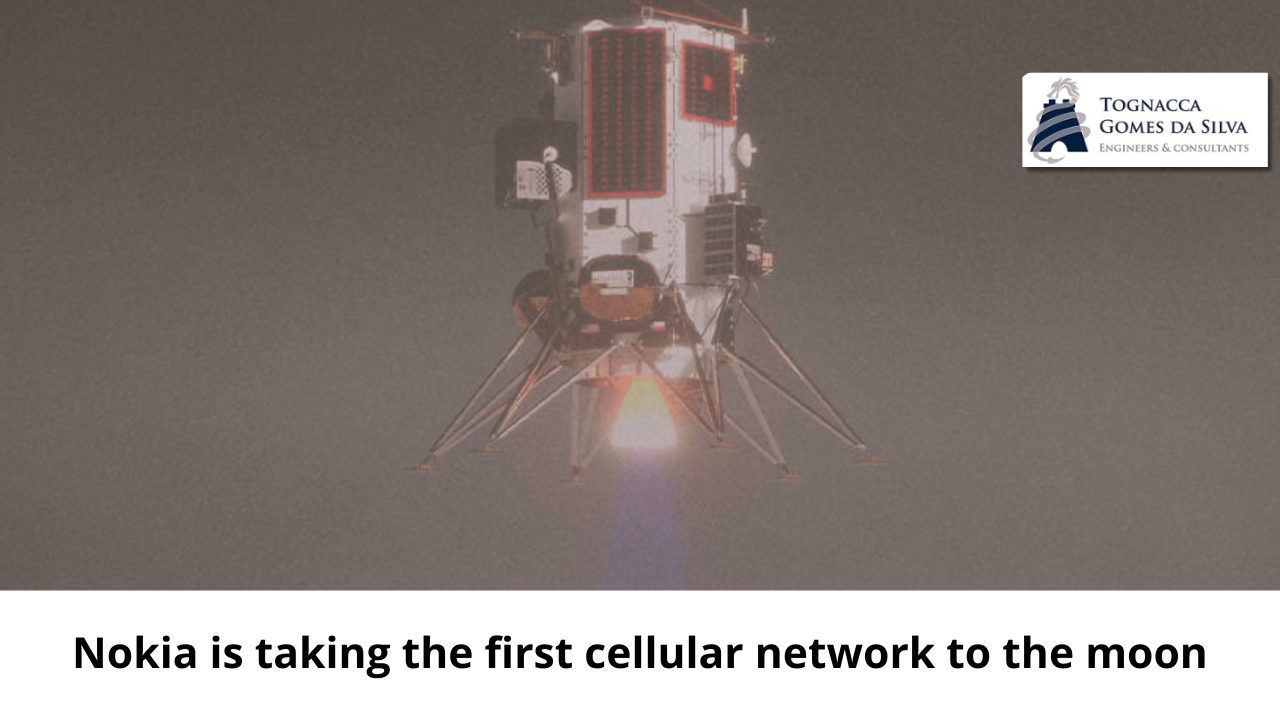Intuitive Machines, the private company behind the first commercial moon landing, has launched a second lunar mission from NASA’s Kennedy Space Center. It sent a lander, rover and hopper to explore a region near the moon’s south pole (where water ice may be present), and deployed a communications satellite in orbit around the moon.
But the mission also brought something never before deployed on the moon or anywhere else in space — a fully functional 4G cellular network.
Point-to-point radio communications, which require a clear line of sight between the transmitting and receiving antennas, have been the backbone of both surface communications and Earth-to-Earth communications since the Apollo program. In the past, using this type of radio in space was not a big problem, as there were never so many points to connect. Typically, there was just a single spacecraft, lander or rover communicating with Earth. And the amount of data transmitted was also low.
“They were based on [ultra-high frequency] or [very high frequency] technologies, connecting a small number of devices at a relatively low data rate,” explains Thierry Klein, president of Nokia Bell Labs Solutions Research, which was commissioned by NASA in 2020 to design a cellular network for the Moon.
However, that could change quickly: NASA’s Artemis program plans to return astronauts to the Moon as early as 2028 and expand that presence to a permanent habitat in the 2030s.
The transition from mostly point-to-point communications to a full cellular network infrastructure should result in faster data transmission speeds, better range and an increase in the number of simultaneously connected devices, Klein says. However, the extreme conditions of space and the lunar surface make it difficult to directly use terrestrial cellular network technology.
To overcome this challenge, Nokia designed components that are robust against radiation, extreme temperatures and intense vibrations that occur during launch, flight and landing. All of these components have been integrated into a single “network in a box”, which contains everything needed for a cellular framework except the antenna and power supply.
“We have the antenna on the lander, so together with the box, this essentially forms the base station and the tower,” explains Klein. The box will be powered by the lander’s solar panels.
During the IM-2 mission, the 4G network will enable communication between the lander and the two rovers. However, the network will likely only operate for a few days – as the spacecraft are unlikely to survive the lunar night.
But Nokia has plans for an even larger 4G or 5G cellular network that could cover the planned Artemis habitat and its surroundings. The company is also working on integrating cellular communications into the Axiom spacesuits that will be used by future lunar astronauts. “Maybe just one ‘network in a box,’ a single tower, could cover the entire area, or maybe we would need several. That wouldn’t be too different from what we see in terrestrial cellular network deployments,” Klein says. He says the network is expected to grow along with the future lunar economy.
Not everyone is happy with this vision, however. LTE networks typically operate between 700 MHz and 2.6 GHz, a band of the radio frequency spectrum that partially overlaps with frequencies reserved for radio astronomy. The presence of such signals from the moon could potentially interfere with scientific observations.
“Telescopes are most sensitive in the direction they’re pointing—up toward the sky,” Chris De Pree, deputy spectrum manager at the National Radio Astronomy Observatory (NRAO), explained in an email. Communications satellites like Starlink often end up in the field of view of radio telescopes. A large-scale cellular network on the moon would add even more noise to the night sky.
There’s also a regulatory hurdle that needs to be cleared. There are radio bands that have been allocated internationally to support lunar missions, and LTE is not one of them. “Using 4G frequencies on or in orbit around the moon violates ITU-R radio regulations,” Harvey Liszt, spectrum manager at the NRAO, explained in an email.
In order to legally deploy 4G on the Moon, Nokia received a waiver specifically for the IM-2 mission. “For a permanent deployment, we’ll have to choose a different frequency band,” Klein says. “We already have a list of candidate frequencies to consider.” Even with this change, Klein says Nokia’s lunar network technology will remain compatible with Earth’s 4G and 5G standards. This means that if you took your smartphone to the Moon and it somehow survived both the trip and the extreme conditions of the lunar environment, it would work just as well on the Moon as it does on Earth. “It would connect as long as we put your phone on the approved device list,” Klein says. All you would need is a lunar SIM card.
( fontes: MIT Technology Review )



